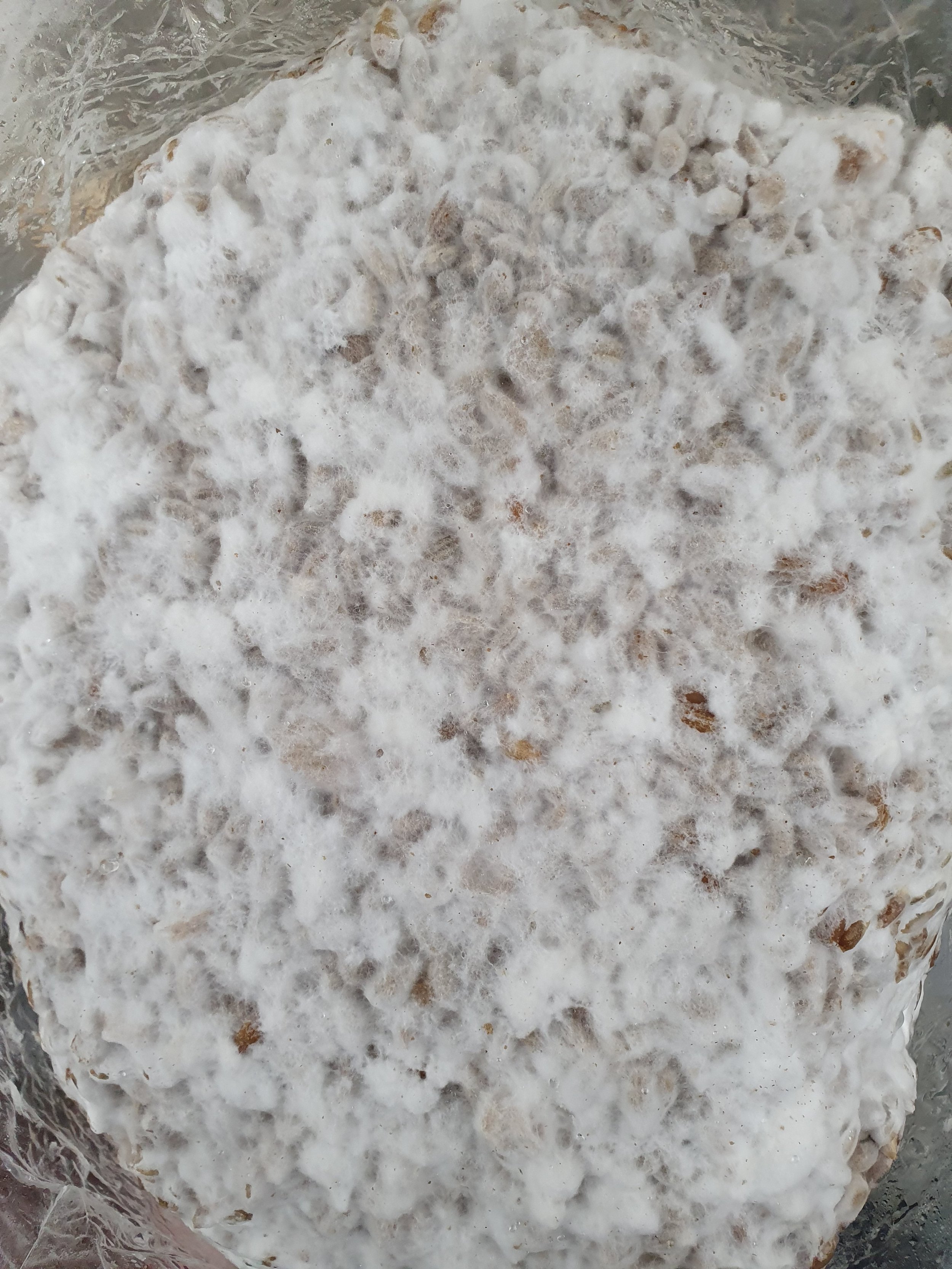The Importance of Fruiting Bodies and Mycelium in Functional Mushrooms
There is some contention in the functional mushroom supplement market about which part of fungi is best used in products. As with every aspect of the business here at Mushroom Culture, we take a science based, evidence backed approach which has shown us that:
Mycelium and fruiting bodies both contain separate, unique compounds
Key compounds for neurological health are found in Lion’s Mane mycelium
Many products on the market only contain fruiting body - these miss out on many beneficial compounds
Clinical trials often only use mycelium
Combining both offer’s the broadest range of beneficial compounds
What is the difference between mycelium and fruiting body?
Mycelium is the main part of fungi and makes up the “underground” portion that is able to break down things like wood, manure and insects for food. Most of a fungi’s life cycle will be spent as mycelium.
When conditions are right (high humidity, air flow, presence of light) mycelium will decide to produce fruiting bodies. These are what we typically think of and know as mushrooms and are a means for the fungi to reproduce. When fruiting bodies mature, they release spores which can travel long distances (via wind, insects or on clothes) and, when they arrive in a suitable environment, will grow out as another patch of mycelium.
Mycelium and fruiting body are both packed full of nutrients and beneficial compounds. Mycelium is actually easier for our bodies to break down than fruiting body. Often, unique beneficial compounds are found in either fruiting body OR mycelium and not in both. This is why we believe it is important to get a dose of both mycelium and fruiting body to get the most out of functional mushroom supplements.
What compounds are found in the mycelium of Lion’s Mane?
In Lion’s Mane mycelium, you find erinacines which are not found in the fruit bodies. Erinacines are able to cross the blood brain barrier and are the only compound in Lion’s Mane with “confirmed pharmacological action on the nervous system”. They have been shown in animals to increase Nerve Growth Factor (NGF) and Brain Derived Neurotrophic Factor (BDNF) which are both important in maintaining neuronal function. Erinacines are therefore likely behind much of the neuroprotective/enhancing effect of Lion’s Mane supplements. Therefore, it is important that products contain a source of erinacines. It is also worth nothing that in clinical trials studying Lion’s Mane (Hericium erinaceus) to treat early onset Alzheimer’s Disease, the researchers use Lion’s Mane mycelium capsules with no fruit body as they believe the mycelium is more important for neuroprotective effects. This study found Lion’s Mane (Hericium erinaceus) fermented wheat product extract had greater neruo-protective and neuro-restorative effects on zebrafish than Lion’s Mane fruit body extract.
What compounds are found in the fruiting body of Lion’s Mane?
Lion’s Mane fruiting body also contains unique compounds - namely hericenones. These may also influence our nervous system by stimulating the production of Nerve Growth Factor (NGF) however, it has been found they stimulate less NGF production than erinacines. To date, studies have found hericenones are unable to cross the blood-brain-barrier. This suggests hericenones have an effect throughout our nervous system but less direct effect on brain health compared to erinacines. Fruiting body is also high in antioxidants, flavanoids and phenolic compounds, which contribute to the health benefits of this mushroom.
What compounds are found in the fruiting body of Turkey Tail?
Polysaccharide-krestin (PSK) is found in Turkey Tail fruiting body and not in the mycelium. PSK has been well studies for it ability to stimulate the immune system e.g. by producing more white blood cells, antibodies, natural killer cells and T-cells. In japan, PSK is an approved product prescribed alongside cancer treatment.
What compounds are found in the mycelium of Turkey Tail?
Turkey Tail mycelium contains polysaccharide-peptide (PSP) which is not found in fruiting body. This polysaccharide is shown to have a strong immune supporting effect and may even protect against the adverse effects of radiation. The immune activating bioactivity of Turkey Tail mycelium is attributed to both the pure mycelium as well as the metabolically fermented substrate which it grows on - this is why we include mycelium-infused substrate in our Turkey Tail extract as well as fruiting body. Clinical trials investigating Turkey Tail extract for treatment of cancer use mycelium only powder.
Summary
From looking at the research, it seems that including an even ratio of mushroom fruiting body and mycelium in our functional mushroom products will bring the most health benefit. This aligns with our goal of bringing effective, affordable and locally produced mushroom products to you that provide the maximum amount of benefit. Backed by science, not buzzwords.
Check out our Lion’s Mane and Turkey Tail Capsules and enjoy the benefits!












